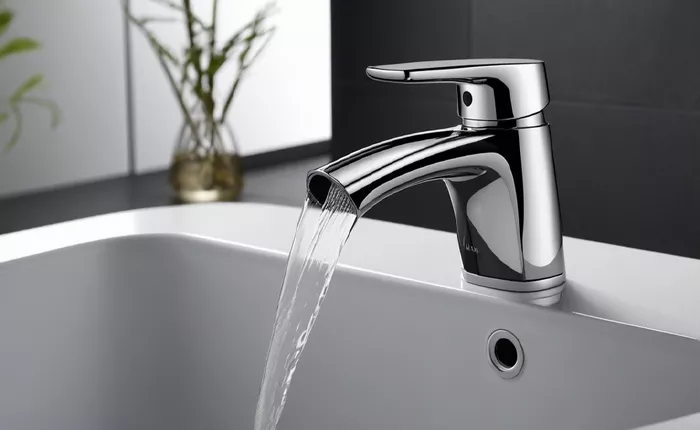Superior Health Faucet: The Gift of Luxury Today

A health faucet is a must-have for a modern, hygienic bathroom. Easy installation and smooth operation. Shop the best options now!
What is a Health Faucet?
It is a small handheld spray with a flexible hose. It is placed near the toilet for easy water-based cleaning. The faucet connects to the water supply and works with a simple trigger. When I started using a health faucet, I felt much cleaner. It was more refreshing than toilet paper and didn’t irritate.
Many people prefer health faucets because water cleans better than paper. Studies show it removes bacteria and lowers infection risks. It’s also eco-friendly since it reduces toilet paper use.
Benefits of Using

A health faucet has many advantages:
- Better hygiene – Water cleans more effectively than toilet paper. It helps prevent irritation and infections. Doctors recommend it for people with sensitive skin.
- Saves money – Toilet paper costs add up. After switching to a health faucet, we saved a lot.
- Good for the planet – Making toilet paper leads to deforestation and pollution. Using a faucet reduces waste and helps save trees.
How to Install
Installing a faucet is easy:
- Turn off the water supply.
- Attach the hose to the water outlet and tighten it.
- Mount the spray holder where it’s easy to reach.
- Turn on the water and check for leaks. If needed, tighten connections or replace washers.
I suggest choosing a faucet with a soft handle and an easy-to-use trigger. My first one had a stiff handle, which was uncomfortable. Checking product reviews before buying helps avoid such issues.
Types of Faucets
Health faucets come in different types:
- Manual faucets – Press a trigger to release water. These are affordable and easy to install.
- Automatic faucets – Sensor-based for touch-free use, improving hygiene.
- Adjustable bidet sprays – Allow you to control water pressure. I like this type because I can set the pressure to my comfort level.
Health Faucet vs. Toilet Paper

Water is better than toilet paper for cleaning. It removes bacteria and reduces infection risks.
- Cost – A faucet is a one-time investment. Toilet paper needs constant buying. After installing a faucet, our toilet paper use dropped by 70%.
- Eco-friendly – Making toilet paper harms the environment. Cutting back helps save trees and water.
Maintenance Tips
To keep your faucet working well:
- Clean the nozzle often – Prevents clogs from mineral buildup. Use mild detergent or vinegar.
- Check for leaks – Washers wear out over time. Replace them to stop leaks.
- Be gentle with the trigger – Pressing too hard can break it. I made that mistake with my first faucet!
How to Choose the Right Health Faucet
Look for these features when choosing a faucet:
- Material – Stainless steel is durable and rust-proof.
- Water pressure compatibility – Some work better with high pressure, while others suit low pressure.
- Comfort – A smooth trigger and soft grip make it easy to use.
Health Faucet for Elderly and Disabled Individuals
Faucets help people with limited mobility. The gentle spray reduces movement, making cleaning easier. For those with mobility issues, a long hose adds flexibility. Some models have wall-mounted holders for convenience.
My grandfather has arthritis and struggled with toilet paper. After installing a faucet, he felt much more comfortable. Small changes like this can improve daily life.
Eco-Friendly Aspects
Using a faucet is better for the environment. Toilet paper production causes deforestation, pollution, and high water use.
An average person uses around 100 rolls of toilet paper yearly. Switching to a faucet saves trees and reduces waste. Faucets also use less water than bidets, making them a smart and sustainable choice.
Common Problems and Solutions
Health faucets may face minor issues:
- Leaking water – Loose fittings or worn-out washers are common causes. Tightening connections or replacing washers fixes the issue.
- Low water pressure – Often due to clogged nozzles. Cleaning with vinegar restores normal flow.
- Stiff trigger – Lubricating moving parts improves functionality.
Regular care keeps the faucet working well.
The Future of Faucets
Health faucets are improving with new technology. Some now offer:
- Temperature control – Adjust water temperature for comfort.
- Bidet functions and remote control – Making hygiene even easier.
As hygiene awareness grows, more homes will install faucets. Experts believe smart faucets will soon be common in modern bathrooms.
Conclusion
A health faucet is a great addition to any bathroom. It provides better cleanliness than toilet paper. Beyond hygiene, Faucets offer comfort, cost savings, and eco-friendly benefits. They are easy to install and maintain, and choosing the right one makes a big difference. Switching to a health faucet was one of my best decisions. It improved hygiene, cut costs, and helped the planet. If you haven’t tried one yet, now is the perfect time to make the switch!
FAQs.
1. What is a health faucet? A faucet is a handheld spray nozzle used for personal hygiene in bathrooms. It provides a water stream for cleaning and is commonly installed near the toilet.
2. How does a health faucet work? A faucet works by pressing the trigger, which releases a controlled stream of water. It is connected to a water supply through a flexible hose.
3. What are the benefits of using a health faucet? A faucet offers better hygiene, reduces toilet paper use, and provides a refreshing cleaning experience. It is also eco-friendly and easy to use.
4. How do I install a health faucet? To install a faucet, connect the hose to the water outlet near the toilet, secure the spray nozzle, and check for leaks before use.
5. Can a health faucet be used for cleaning the toilet? Yes, a healthy faucet can help clean the toilet bowl and surrounding areas. Its high-pressure spray removes dirt and maintains bathroom hygiene.
6. Is a health faucet better than toilet paper? Yes, a faucet ensures better hygiene, reduces irritation, and minimizes paper waste, making it a more effective and eco-friendly option.
7. What materials are best for a health faucet? Health faucets made from stainless steel or high-quality ABS plastic are durable, rust-resistant, and long-lasting, ensuring better performance.
8. How do I maintain a health faucet? Regularly clean the nozzle to prevent clogging, check for leaks, and ensure the hose is free from kinks to maintain proper water flow.
9. Can a health faucet be used with hot water? Yes, some health faucets support hot water, but check the material and specifications to ensure it can handle high temperatures.
10. Where can I buy a health faucet? You can buy a health faucet online, in hardware stores, or at plumbing supply shops. Select a model based on your spending limit and needs.




